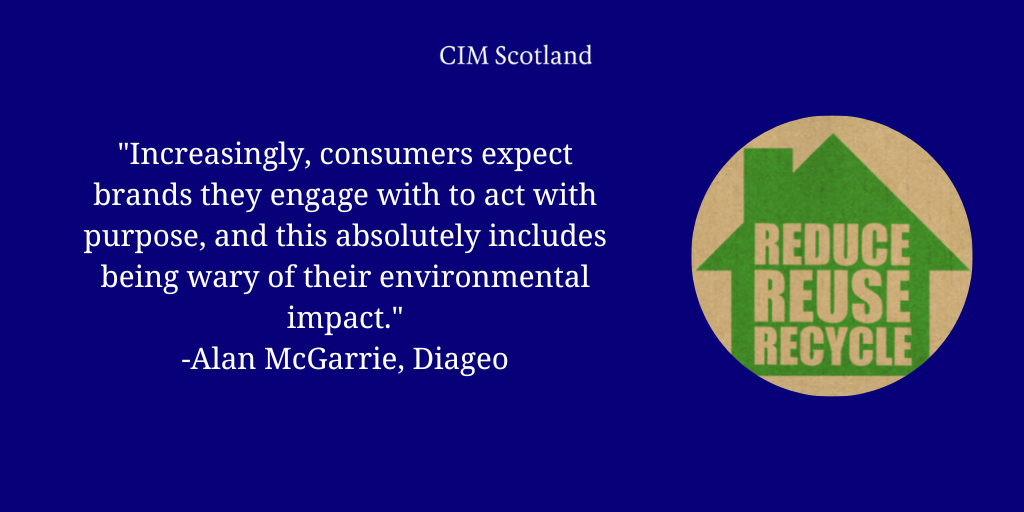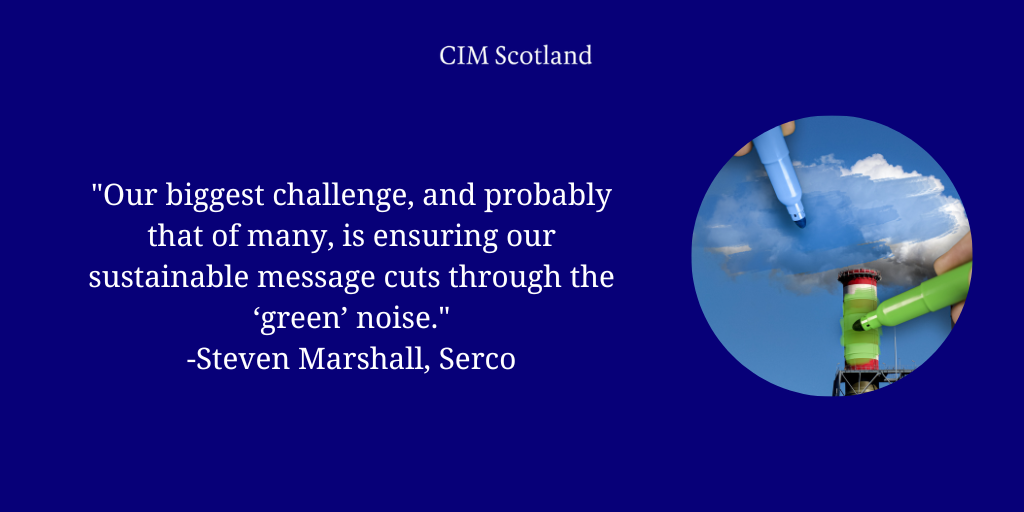How to be sustainable in marketing: three easy tips
Sustainable marketing. It’s become more and more important: with over one billion search results for the term. And with COP27 taking place in November 2022, this is sure to increase.
But as sustainable marketing grows in popularity, so does the requirement for scrupulous research and making sure that any claims made are clear, understandable and honest. And with CIM research finding that half (49%) of marketers are wary of working on sustainability marketing campaigns due to the fear of their company or clients being accused of ‘greenwashing’, it means a whole new area for companies to consider.
Greenwashing, the practice of companies over-selling their sustainability credentials, is becoming more well-known. In fact, in 2021 the Competitions and Marketing Authority (CMA) launched the Green Claims Code to try to crack down on companies making claims that they couldn’t back up.
Karin Hayhow, Marketing Director of Mackie’s Ice Cream, suggested that one issue for companies it that there is an overabundance of sustainable credentials, and it is difficult for both companies to know which they should aim for, and for customers to know which credentials to look out for.
Speaking in a CIM Scotland webinar, she said: “I think whether or not sustainability becomes a real reason to buy our ice cream, it’s increasingly important to people in their lives and they want us to help them make good choices. As it stands however, I think the space is quite confused and overcrowded on this front at the moment. I read that there are over 400 accreditations available and these are only a small selection in addition to the huge variety of accredited accreditation schemes and methods.
“The actual science behind it of determining a company's emissions and calculating the carbon footprint is quite difficult: it’s time consuming, can be expensive and some areas yet to be standardized so I think these factors make it difficult for a small business to know how best to navigate addressing its actions and conveying them to consumers hopefully this is something again that we're going to just see improve over the next few years creating easier routes for clear and powerful messaging and benchmarking tools on sustainability.”
With so many accreditations, from B Corp to Carbon Trust, there are many ways for companies to ‘prove’ their environmental impact. However, some small companies can’t afford the cost of accreditation and have to reply on their claims. This is where following the Green Claims Code is important: making sure that claims are genuine, with evidence to back them up.
Tip 1: Provide tangible examples
Alan McGarrie, Head of Marketing – Scotland Brand Homes, Diageo, explained: “There are two key elements at play from a marketing point of view. Increasingly, consumers expect brands they engage with to act with purpose, and this absolutely includes being wary of their environmental impact. Secondly, they expect those brands to have tangible examples of their activity in this area to back up what they are saying.”

Providing tangible examples, as Alan suggests, is a great way to show a brand’s sustainable credentials while preventing the company of falling foul of greenwashing claims. By showing or telling exactly what the company does, it is obvious to consumers what steps are being made.
Alan continued: “We’re fortunate that Johnnie Walker Princes Street has sustainability at its core. For example, our purpose built dispenser machines, which you can see on our flagship Journey of Flavour tour, save us literally thousands of glass bottles per year. At the top of the building we’ve taken various steps to promote biodiversity with a sedum roof and planters to attract local wildlife. We also grow a lot of our garnishes for the bar there. These are all elements we’ve communicated at various points across social media and in the press. Again the key here is to ensure what we’re saying is tangible.”
Want to visit Johnnie Walker Princes Street and find out more about Diageo for yourself? Join Alan McGarrie on 24 November 2022 for an exclusive tour, followed by a fascinating discussion on the brand’s marketing. Tickets are limited.
Tip 2: Show how it benefits the consumer
Steven Marshall, Head of Sales & Marketing at Serco Caledonian Sleeper, said: “Our biggest challenge, and probably that of many, is ensuring our sustainable message cuts through the ‘green’ noise I would say given the volume of messaging out there.”
There are many different ways that a brand can be sustainable, but some of these don’t have a real impact on the consumer. If the goal is to persuade them to switch from another product or service, then the benefits need to be clear.
It’s a common marketing theme that you don’t sell your product, you sell a solution, and the same is true for sustainable marketing.
Steven said: “We are having a number of discussions with corporate clients at the minute who see the benefits of travelling with Caledonian Sleeper versus other less sustainable means and are making the switch. The prospect of Sleeper's lower carbon footprint (eg the journey and the "hotel room" for the evening is covered in one) plus the time saving benefits of Sleeper create a huge win for the traveller.
“Behind the scenes our Guest Experience teams have been working hard to lower that carbon footprint even further by removing numerous single use plastic items from the likes of room service. We have also worked with long term partner, Arran Sense of Scotland, to amend how we supply our Guest onboard toiletries. Single use miniature plastic bottle are now removed, with wall dispensers now installed in the en-suites onboard. This initiative removes up to 400,000 miniature single use. bottles a year from our service.
“My own view is that if we are not doing all we can to be sustainable a business would face an uncertain future as the modern-day customer expects us to be doing our bit to help look after the planet and to support customers making environmentally positive choices.”

Tip 3: Don’t just focus on sustainability
For Mackie’s Ice Cream, sustainability is something that they consider at all points: from using wind turbines and solar panels to power their operation, to clearly stating on their packaging what their carbon goals are.
However, in customer surveys they found that environmental factors ranked 14th on the list of what people considered when they would buy ice cream, with factors around taste and quality ranking first.
This suggests that while sustainability is important, it is not enough for marketers to hang their hat on: having a good quality product or service is also essential.
Karin said of environmentally friendly products: “It certainly remains a value-added feel-good factor…while not necessarily the predominant reason to buy ice cream, it’s definitely of growing interest.”
This means that while it’s great to mention your sustainability practices in your marketing, for many customers it is not a reason in itself to buy. Mentioning sustainability in your marketing should be a regular, consistent drumbeat…but not a guitar solo. Let your product or service remain the star!

